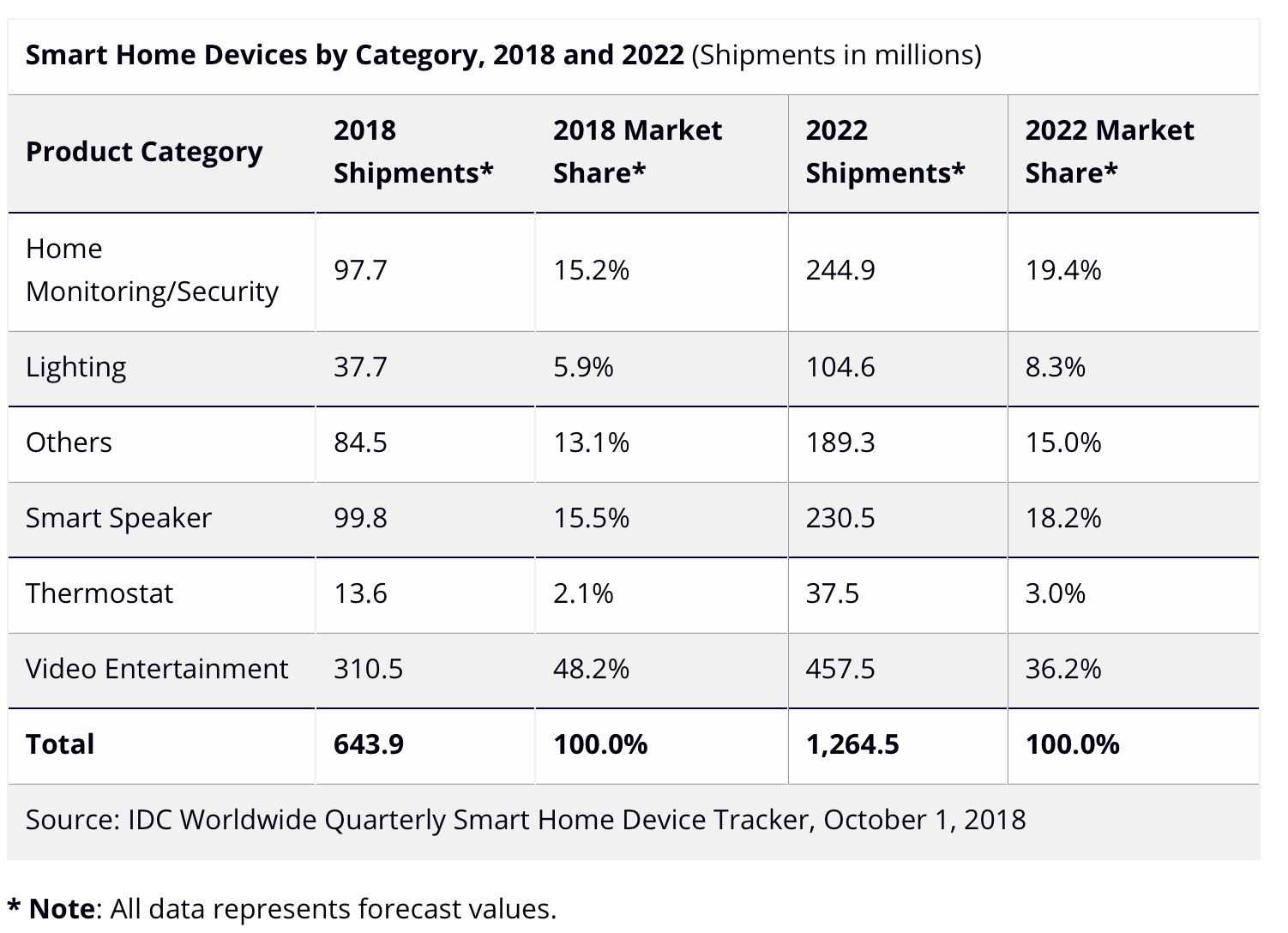The worldwide smart home devices market is expected to grow 31% year over year in 2018 to 643.9 million shipments, according to International Data Corporation (IDC).
The entire smart home market, comprised of smart speakers, video entertainment products, connected lighting, smart thermostats, and home monitoring/security products, is forecast to be nearly 1.3 billion devices by 2022 with a five-year compound annual growth rate (CAGR) of 20.8%, adds the research group. The fastest growing category with a five-year CAGR of 39.1%, accounting for almost 100 million units in 2018 and 230.5 million by 2022, will be smart speakers such as the Amazon Echo and Google Home.
“While dedicated smart speakers with built-in voice assistants will be prevalent throughout the forecast, we’re already seeing a notable shift in this market,” says Jitesh Ubrani senior research analyst for IDC Mobile Device Trackers. “Many new types of devices, both inside and outside the home, now include built-in voice assistants. Not only do these help to increase the number of touch points available to end users, but it also helps each assistant to grow by expanding reach and gaining a deeper understanding of what, when, and how users approach various tasks.”
Privacy and security for smart home devices remains one of the key inhibitors to adoption, as evidenced in IDC’s recent Consumer IoT S urvey. However, IDC maintains a positive outlook for the market as the convenience of smart home devices frequently outweighs concerns.
“Security and privacy are top of mind for most consumers when considering deployments of smart home devices,” says Adam Wright, senior research analyst for IDC’s Consumer IoT Program. “In addition to having adequate security solutions in place when bringing devices to market, vendors must also respond to consumers’ concerns by properly educating them about these safeguards and raising awareness about the benefits of sharing data that can ultimately provide better devices, services, and experiences over time.”

